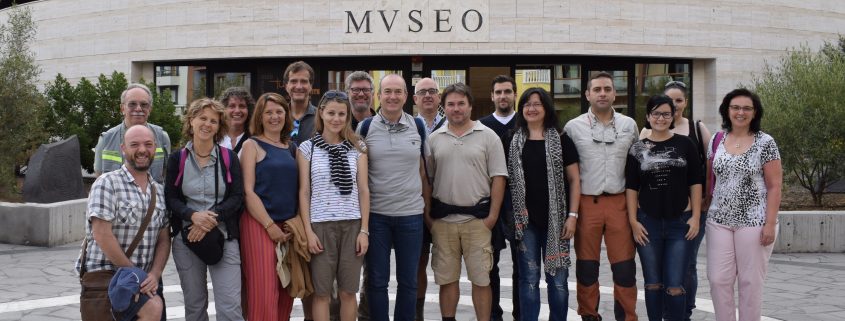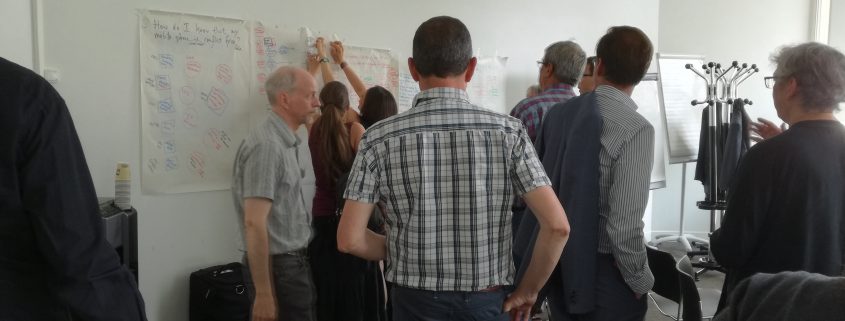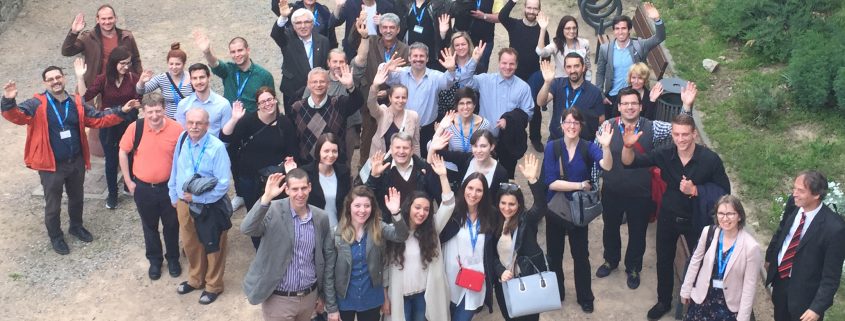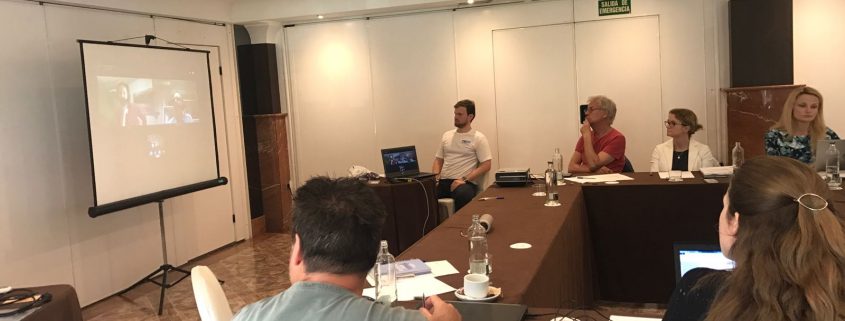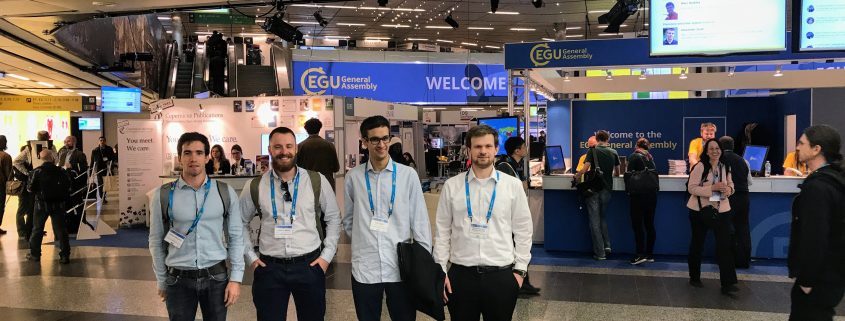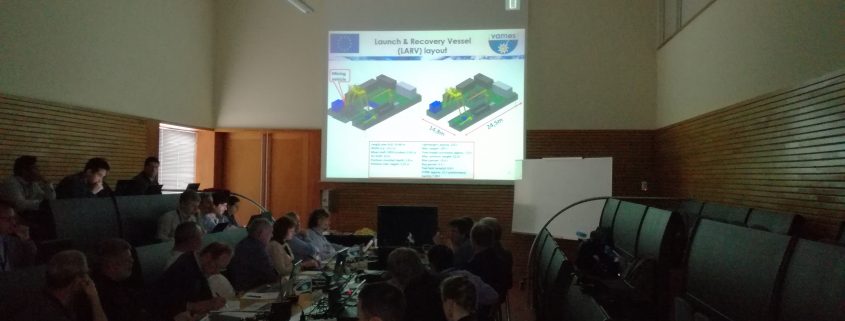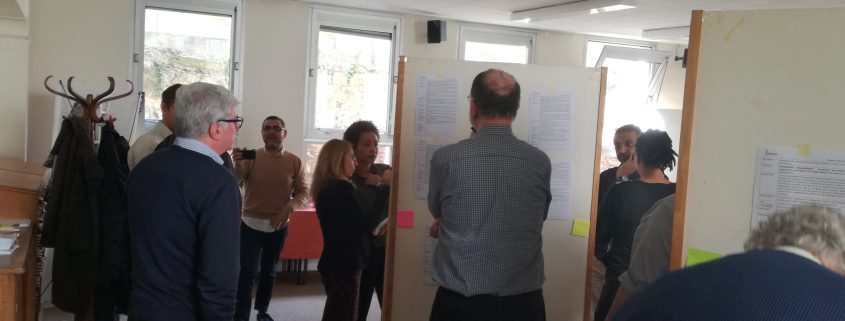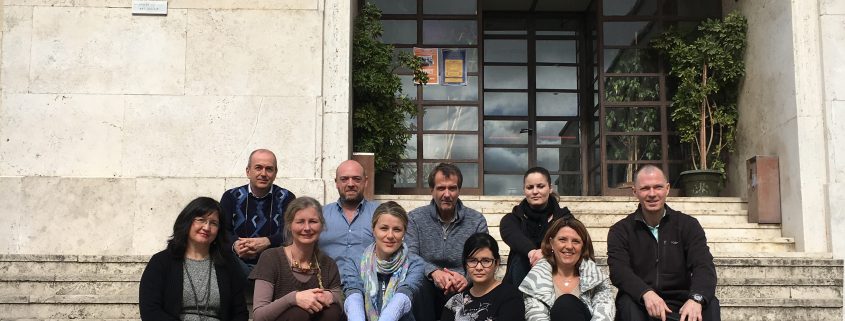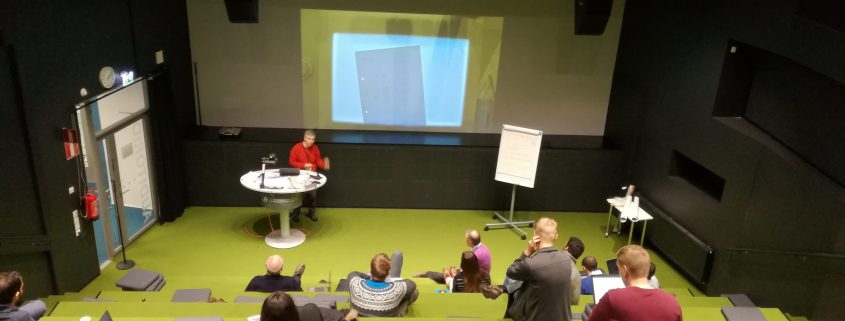MICA consortium meeting – Paris, France
/in Event, News/by Luis LopesThe most recent MICA project consortium meeting took place at the Paris FIAP Jean Monnet Congress Center from the 13th until the 15th of June.
The first day covered progress meetings for the different work packages (seven in total) in the project as well as a management board meeting. In the WP5 ‘Minerals Policy Context’ meeting, the work package where LPRC contributes the most, Marco Martins briefed on the Foresight Methodology Workshop held in Las Palmas de Gran Canaria on May, 2017, and how its outputs can help the work developed within the work package and the MICA Platform (EU-RMICP) – the ultimate goal of the MICA project. Additionally, case studies developed by the partners for the MICA Project on Economic and Industrial Ecology Methods in the Raw Materials context were presented.
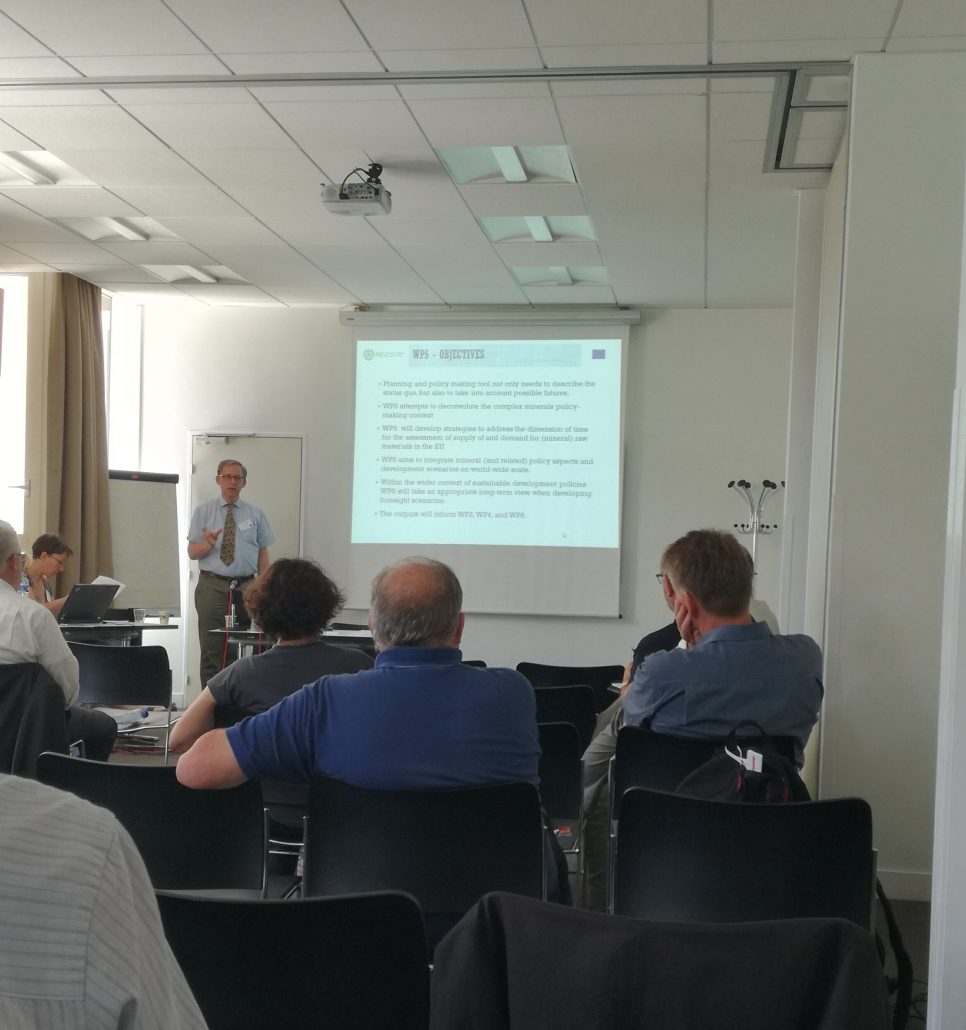
Discussion sessions held regarding WP5 (Minerals Policy Context)
On the second day, a project plenary session was held, providing an overview of the project’s progress for each work package to all the audience and further discussions were held. The advisory board members that were present in this consortium meeting had an opportunity to make comments and suggestions, which are always welcome.
The last day brought external experts into the consortium mix to make presentations on past experiences regarding ‘Material Flow Accounting and Data’ gathering. The meeting ended in the afternoon with an exercise to develop approaches (“flowsheets”) for answering specific stakeholders’ questions by referring to specific data and methods, which in turn will support the development of the platform (EU-RMICP).
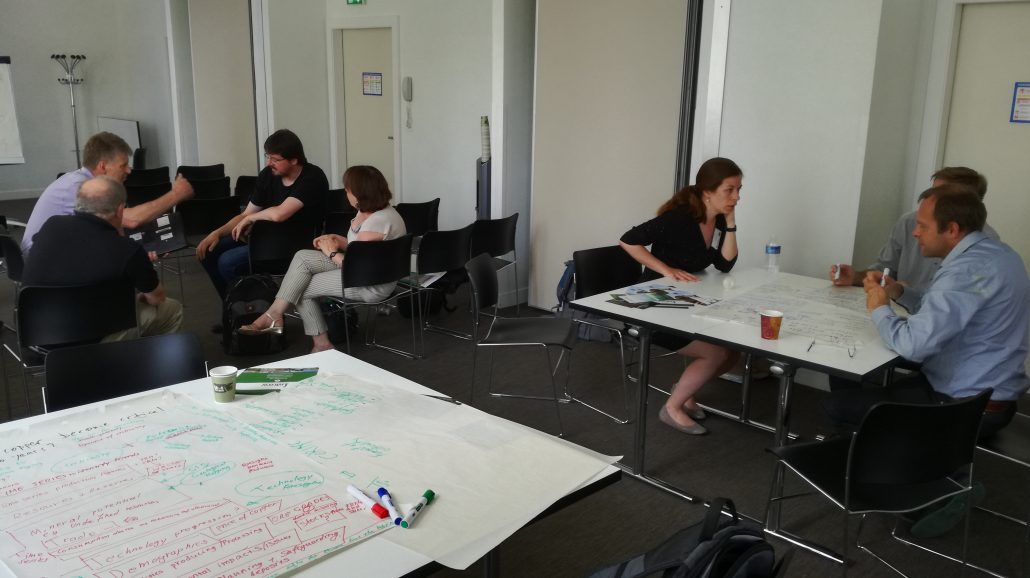
The ‘flowsheets’ exercise in action
The MICA Project ends in the beginning of 2018 and everyone, including LPRC with focus on WP5, is making an effort to achieve great results with the new MICA platform.
La Palma Research Centre organizes a foresight workshop
/in Event, News/by Luis LopesLa Palma Research Centre hosted the MICA project’s ‘Raw Materials Foresight Methodology Workshop’ on the 10th and 11th of May at Hotel Parque in Las Palmas de Gran Canaria, Islas Canarias.
The main objective of the workshop was to frame the MICA foresight methodology recommendations in a minerals policy context on a 2030-2050 timescale. Workshop participants included MICA project partners and a number of external experts on both foresight and raw materials.
On the first day of the meeting, the external experts and the research centre team presented examples of foresight case-studies in both raw materials and other fields. These presentations were successful in generating broad-ranging discussion on foresight methods utilised in the case studies, common constraints on the foresight process, and how to establish more accurate proxies during foresight evaluation.
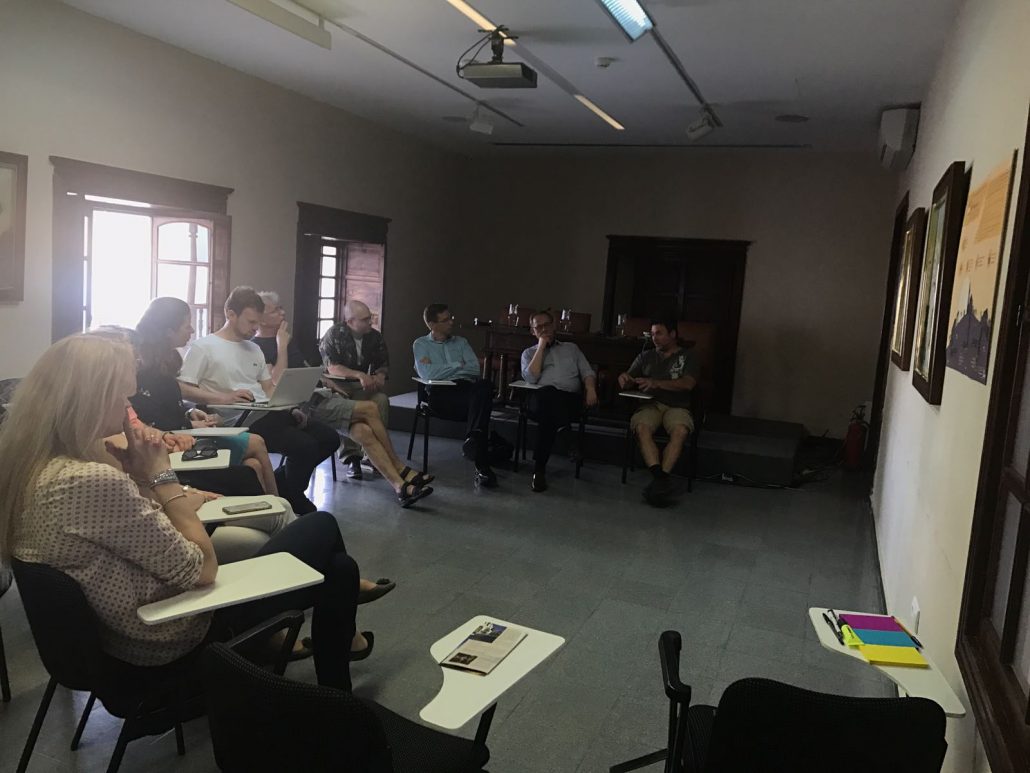
General analysis and discussion on foresight methodologies held by the participants
The second day began with a review and summary of the findings of the first day. Subsequently, there were further presentations and discussions aimed at establishing a common vision and recommendations for EU minerals policy and the upcoming MICA ‘Raw Materials Intelligence Platform’ (EU-RMICP), which is due to be launched in January 2018.
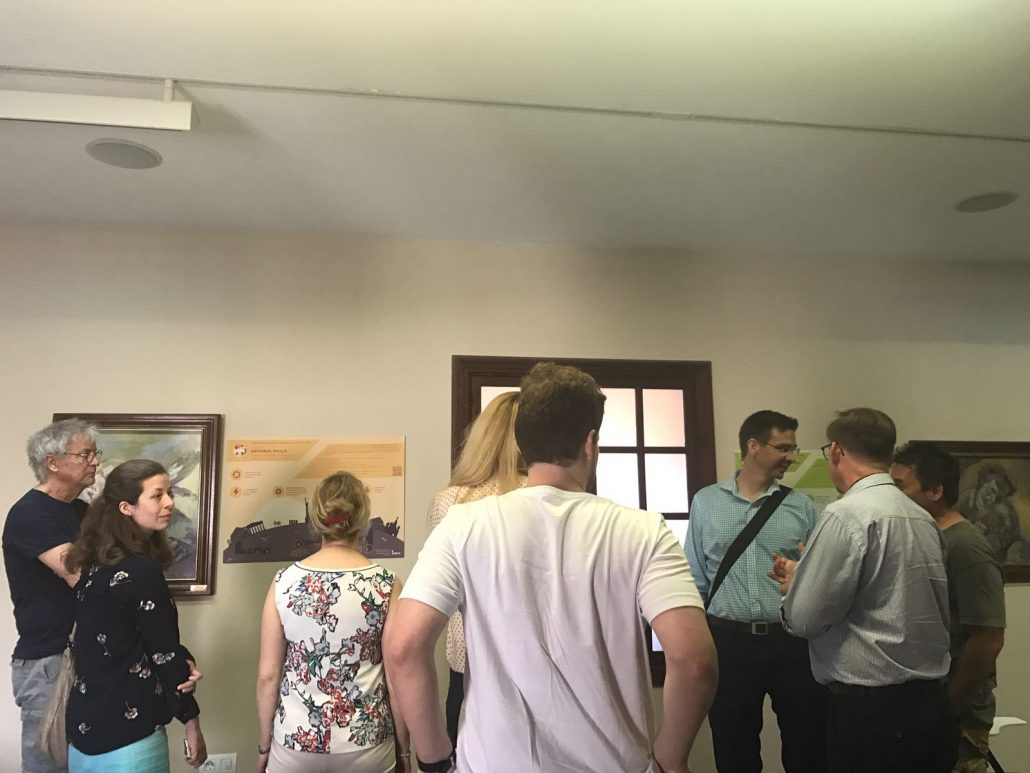
Workshop participants discussing the future of the mineral raw materials sector
The workshop ended on a positive note after a final group exercise which took place at Columbus House. During this session, workshop participants explored potential pathways for the future of the mineral raw materials sector. The experts also provided recommendations on how foresight studies could aid EU-RMICP users in understanding how different factors may influence the sector over longer time horizons.
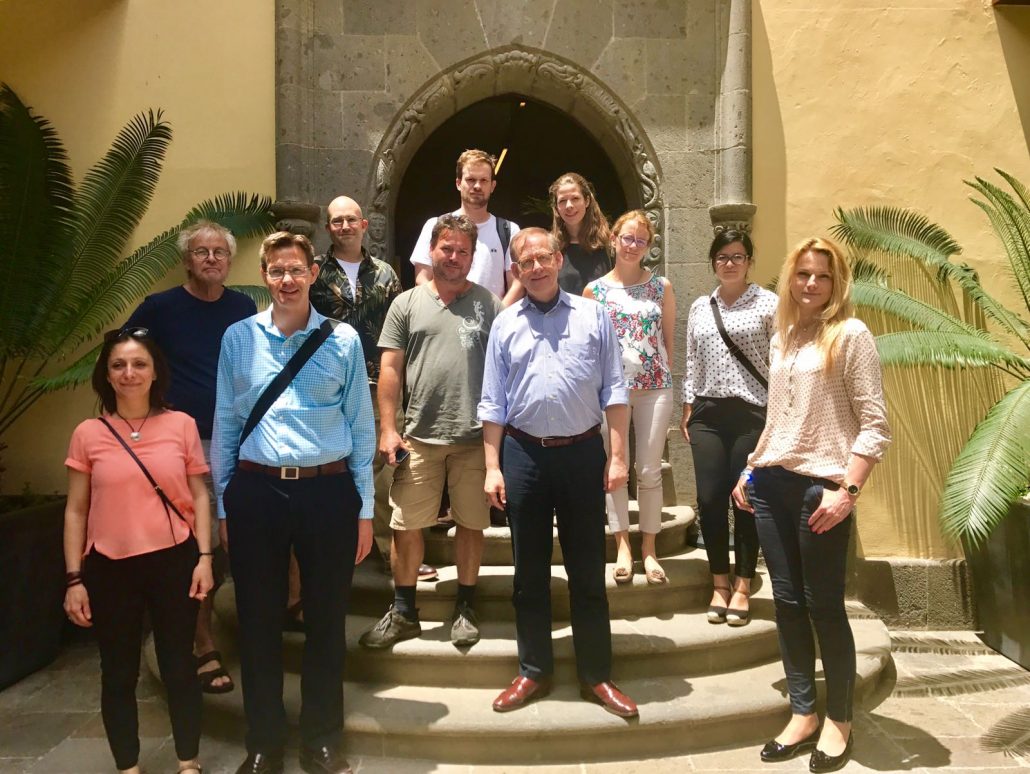
MICA partners and the external experts that got together to discuss foresight methodologies for the raw materials sector
During the workshop, recommendations were agreed upon to improve EU-RMICP functionality by answering stakeholders’ needs with custom foresight approaches. The group also gave their ideas on how to enhance the development of the MICA ‘Raw Materials Foresight Guide’, which will be released in August 2017.
La Palma Research Centre presents multiple projects at EGU 2017
/in Event, News/by Luis LopesThe 2017 European Geoscience Union’s (EGU) General Assembly took place in Vienna at the Austria Centre from Monday the 24th to Friday the 28th of April. At this large geoscientific gathering, at which over 12,000 participants from academia and industry attended, La Palma Research Centre colleagues took the opportunity to exhibit and present six research and innovation projects.
On the first day of the conference, Cameron Sword opened the Energy, Resources and Environment session with an oral presentation on the European Commission’s Horizon2020 co-funded ¡VAMOS! (Viable Alternative Mine Operating System) project. During the 15 minute presentation, Cameron explained the overall concept and technological components of ¡VAMOS!, its vision for a future of cost-efficient low-impact European mine excavation, and the results of the project to date. After the presentation, multiple questions from the audience were answered, whilst a stimulating debate ensued on the functionality of the system components.
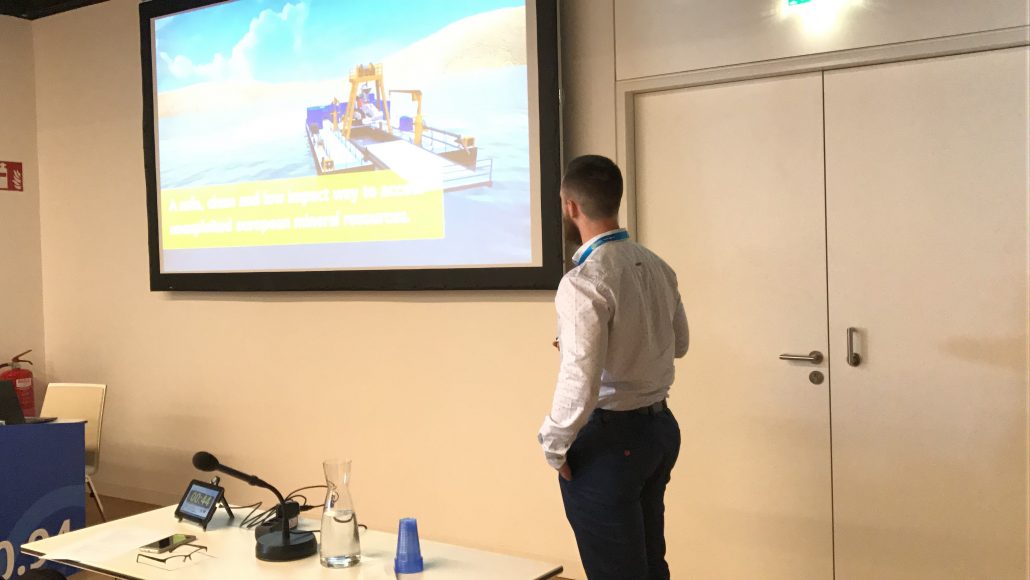
Cameron Sword narrates an interactive video showing the operation of ¡VAMOS!
Immediately following the ¡VAMOS! presentation, Luís Lopes gave a detailed and highly technical presentation on UNEXMIN (Underwater Explorer for Flooded Mines) – a related EC H2020 project in which mining and robotics scientists are collaborating to create a world-first autonomous underwater mapping robot for use in flooded mines. Luís’ UNEXMIN presentation was highlighted as a ‘significant interest’ topic for the EGU 2017 conference, being selected as one of the most interesting to attend during the week-long conference.
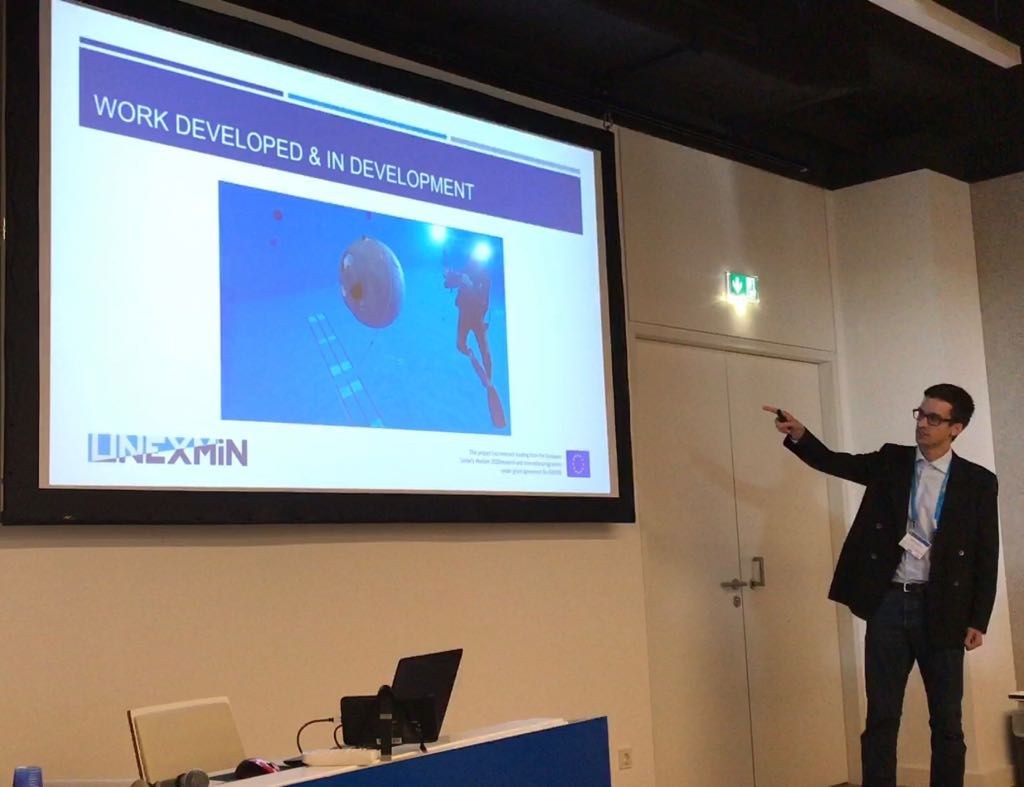
Luís Lopes delves into the details of UNEXMIN during his presentation at the ERE1.1 session
Then, following an engaging presentation on the INTRAW (International Observatory for Raw Materials) project by Chris Keane from the American Geosciences Institute, LPRC’s colleague, Marco Martins gave an insightful talk on foresight methodology and raw materials case studies. Marco’s presentation focussed on work done during the ongoing MICA (Mineral Intelligence Capacity Analysis) project, including a review of data and stakeholders needs in the field of raw materials.
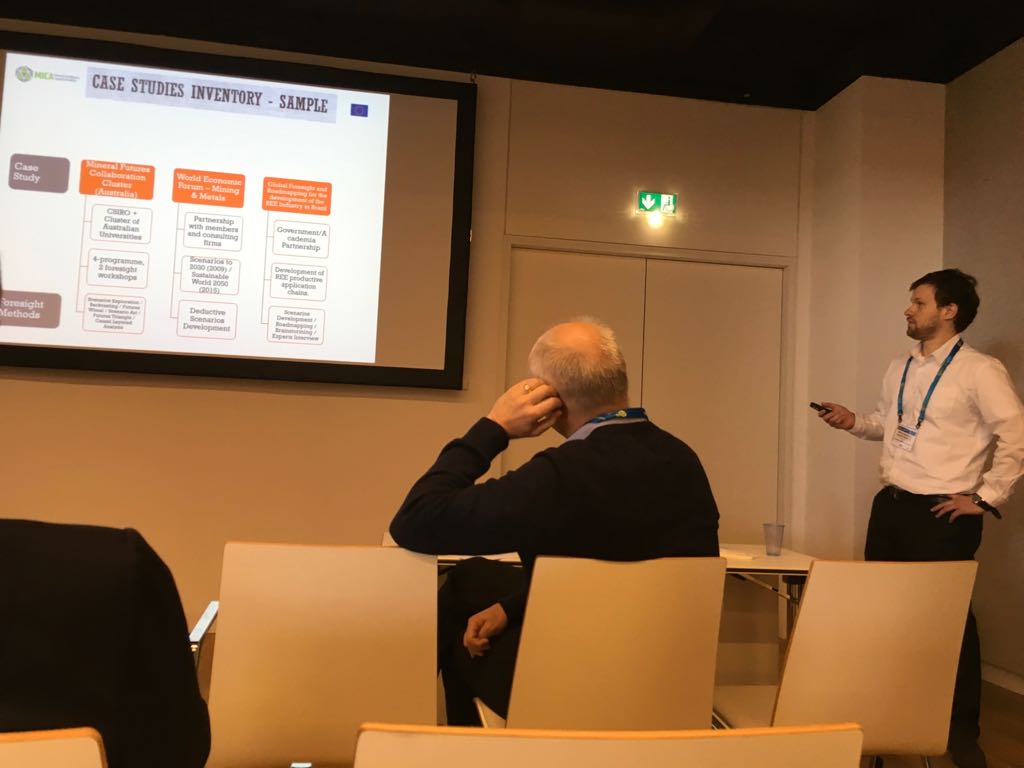
Marco Martins outlines the nature of the foresight case-study data used during the MICA project
As a bonus presentation during the morning ERE session, Tamás Miklovicz gave an ad hoc talk on the new H2020 CHPM2030 (Combined Heat, Power and Metal extraction) project. Concluding with an intriguing and extensive discussion from an engaged and interested audience, Tamás proceeded to hold an open poster session on Thursday afternoon on this innovative combined geothermal energy/mineral-extraction project.
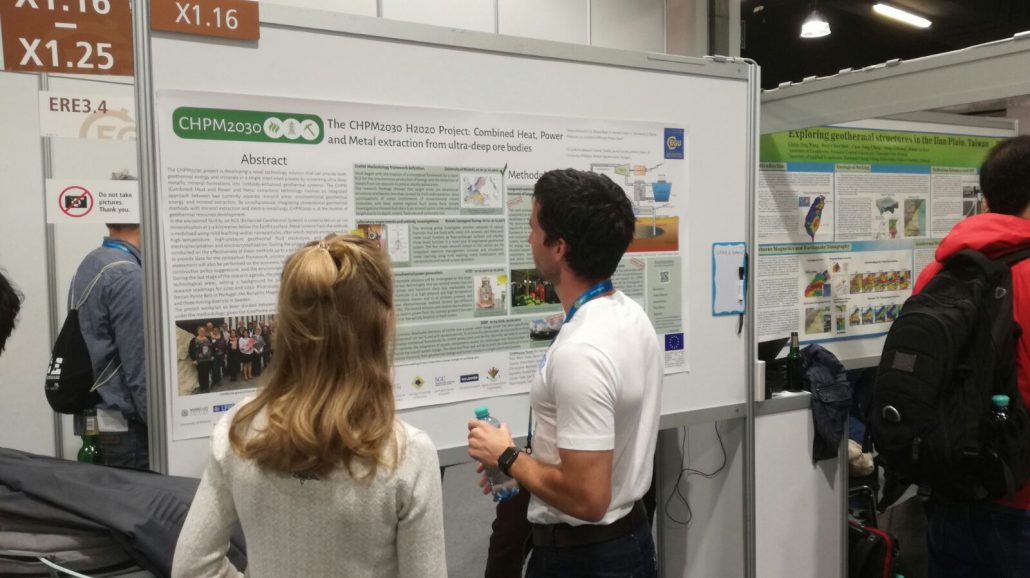
Tamás Miklovicz comfortably explains CHPM to just one of many similar interested onlookers in the main hall at the Austria Centre during EGU2017
Also presented in the main hall on Thursday were the KINDRA (Knowledge Inventory for Hydrogeology Research) and La Noche de los Volcanes projects. Cseko Adrienn explained the purpose and details of the KINDRA project and the recent opening of its signature EIGR (European Inventory on Groundwater Research), whilst Ariadna Ortega took charge of La Noche de los Volcanes by explaining the statistical results and main outcomes of this four-year geoscience outreach project which was comprised of three separate sub-projects at various locations across the seven Canary Islands.
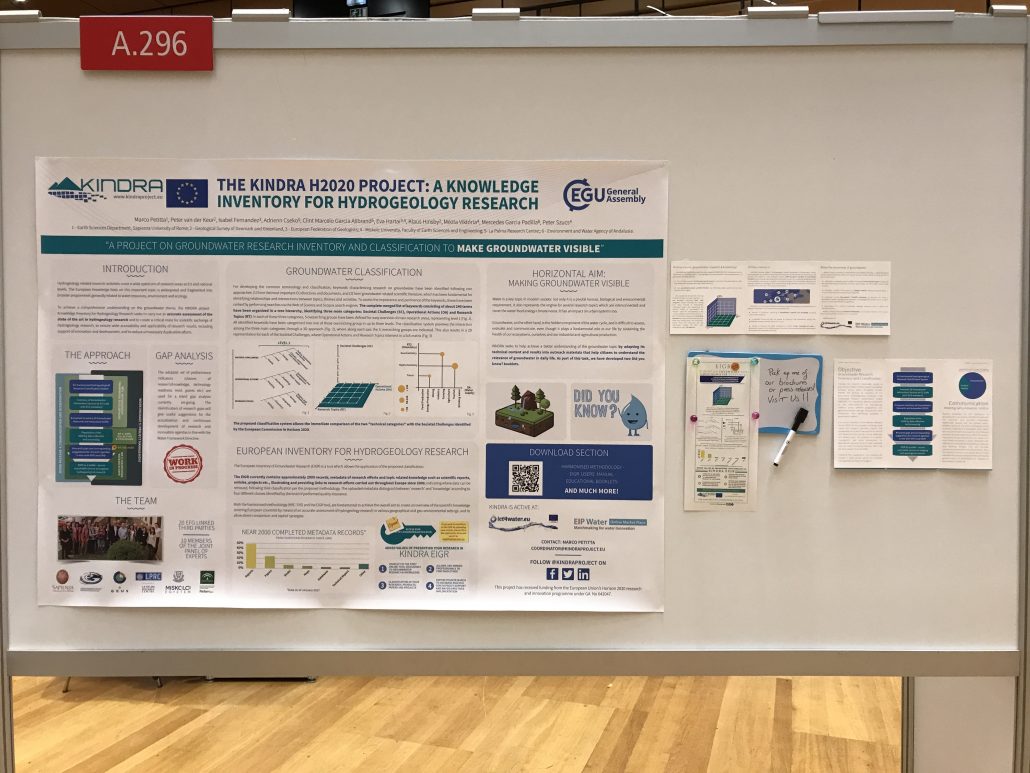
The KINDRA poster explaining the newly launched European Inventory on Groundwater Research
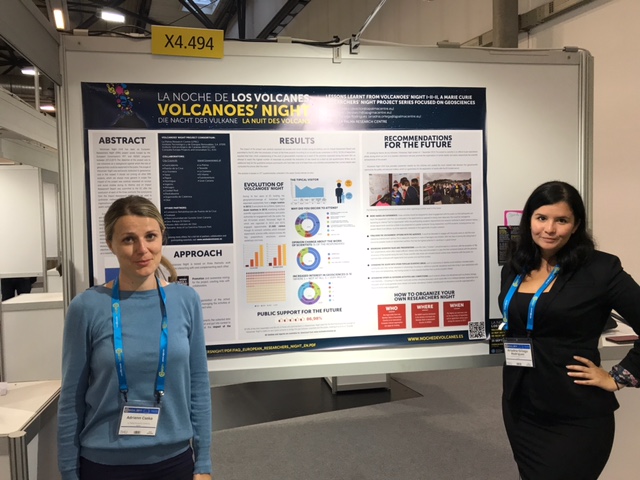
In short, the EGU General Assembly was a successful week of company and project dissemination and promotion, and LPRC looks forward to attending the conference again next year in Austria!
Annual ¡VAMOS! Partners’ Forum meeting held in Porto
/in Event, News/by Luis LopesLPRC colleagues Cameron, Edine and Luís attended a recent ¡VAMOS! meeting held at project robotics-developer INESC’s Porto facilities on the 29th and 30th of March. The purpose of the meeting was to hold the annual Partners’ Forum (PF) meeting, which was supplemented with an Advisory Board (AB) review meeting.
On the first day of the meeting, attendees divided themselves amongst two separate workshops to discuss progress on Work Packages 1 & 6, Dissemination, and Market Uptake, and Work Packages 3 & 4, System Construction, and Navigation and Awareness.
In the afternoon, both groups reconvened to attend a meeting on Work Package 5, Field Testing. During this session, the schedule and management of field-tests, site calibration and local assembly of components, and the training of personnel and site-safety were discussed and agreed upon. This careful and detailed planning is to ensure that the field tests in Devon, UK (October 2017) and in Vares, Bosnia (June 2018) will be conducted without avoidable setbacks or injury to staff.
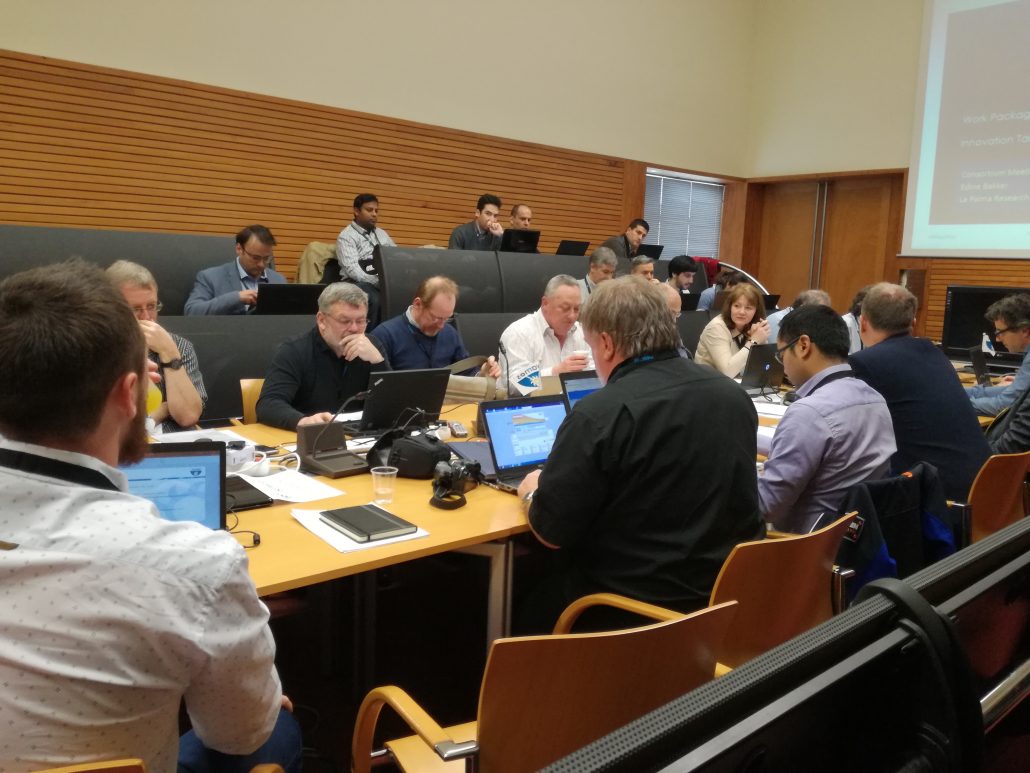
¡VAMOS! partners attend the WP5 Field Testing workshop

The current build-status of the ¡VAMOS! mining vehicle at SMD in Newcastle.
In the morning of the second day, external Advisory Board members joined the consortium to conduct an iterative review of all project work packages 1 to 7. LPRC colleagues Edine and Cameron presented Work Package 1 and Work Package 6. After this full project review, a summary and review of project risks was conducted by Mr Jeroen van der Linden of Damen Dredging.
In the afternoon the partners toured the INESC robotics lab, where INESC partners are developing many subsea robotics technologies for ¡VAMOS! and other European projects. After this informative visit, the Advisory Board and Work Package leaders met for the final event of the two-day workshop: the Advisory Board review session. During this session, the Advisory Board put forth their critiques of various aspects of the project, and provided their insight into the technology and the developments per work package.
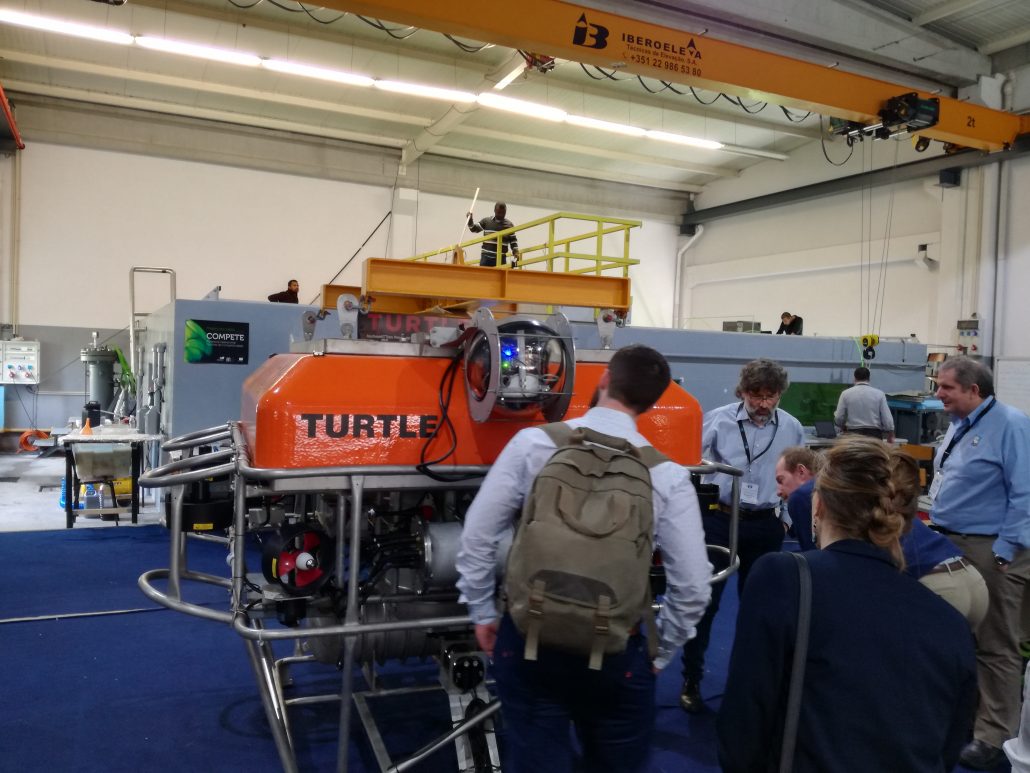
L-R: Cameron Sword (LPRC), Eduardo Silva (INESC), Bramley Murton (AB), Edine Bakker (LPRC), Glen Jones (AB).
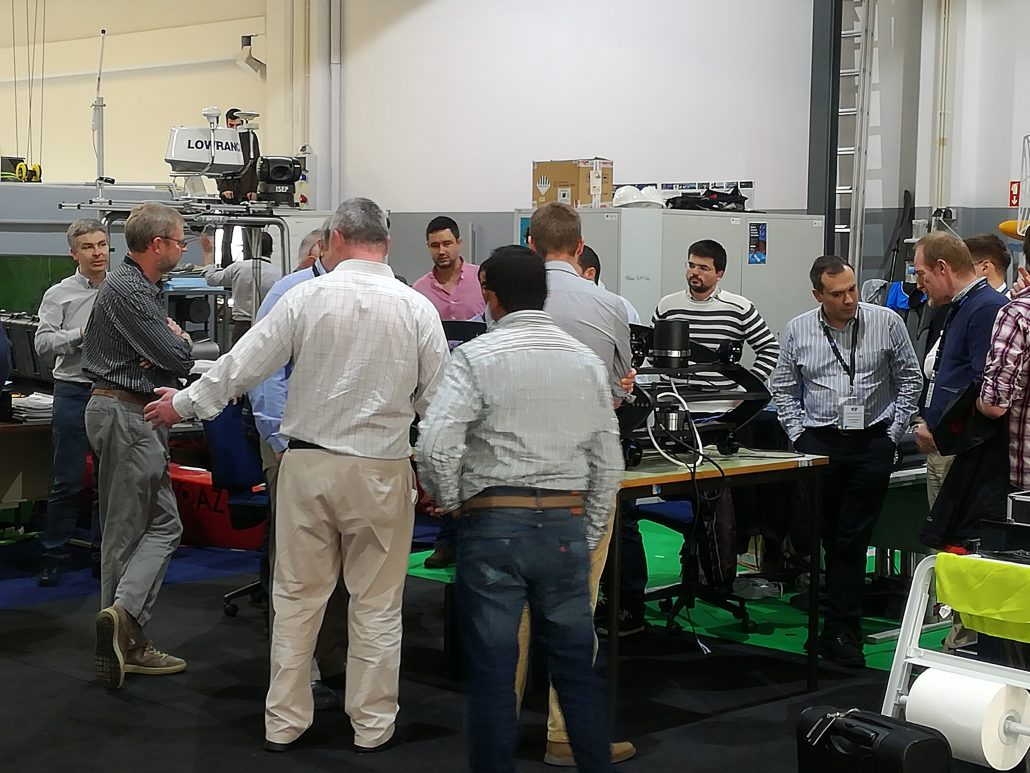
Foreground (L-R): Mike Buxton (AB), Stef Kapusniak (Technical Manager), Jeroen van der Linden (Risk Manager).
The ¡VAMOS! project is now entering the final stages of the construction of all technical equipment. The consortium is on schedule in all project matters, and is looking forward to the first field tests in Southwest England this October.
The 5th INTRAW consortium meeting – Paris, France
/in Event, News/by Luis LopesThe 5th INTRAW consortium meeting was held in Paris on the 22nd and 23rd of March. During the meeting the INTRAW Consortium and Reference Country (RC) representatives from the USA, Australia and South Africa were present. The focus of the meeting was Work Package (WP) 2 ‘Programming’ and WP3 ‘Deployment’. The INTRAW project is working towards developing an ‘International Observatory for Raw Materials’.
The first day began with an introduction and the approval of the minutes from the last consortium meeting in Falmouth, Cornwall. After this, work commenced with an overview of the active work packages, with a focus on WP2 and WP3. Topics discussed in each work package included the schedule, gaps and deviations from original plan, and outcomes and milestones already or soon to be achieved.
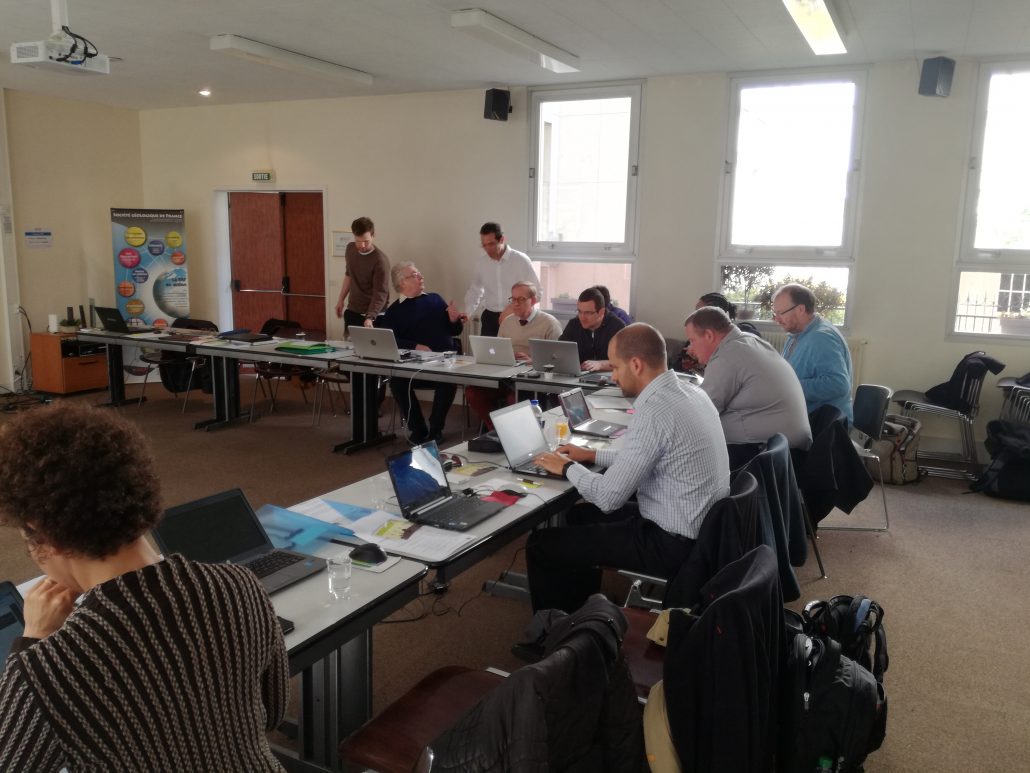
Partners at the INTRAW consortium meeting
During discussion on WP2 there was a major engagement of the partners on the three forecasted scenarios for the year 2050, all of which consider four Fields of Action (FoA): Research & Innovation, Industry & Trade, Education & Outreach and Recycling & Substitution. An interactive exercise took place where the attendees reflected on current progress and considered new ideas on a set of defined action plans (a recommendation for stakeholders) on each FoA. This exercise will allow for better and more appropriate actions to be applied, with refinements like these saving time and money at the implementation stage. Subsequently, LPRC representatives Marco and Luís conducted another WP2 workshop exercise with the aim of understanding the effect of cross-cutting synergies between different action plans. During this exercise, partners considered different future scenarios and their potential impact on international cooperation on raw materials.
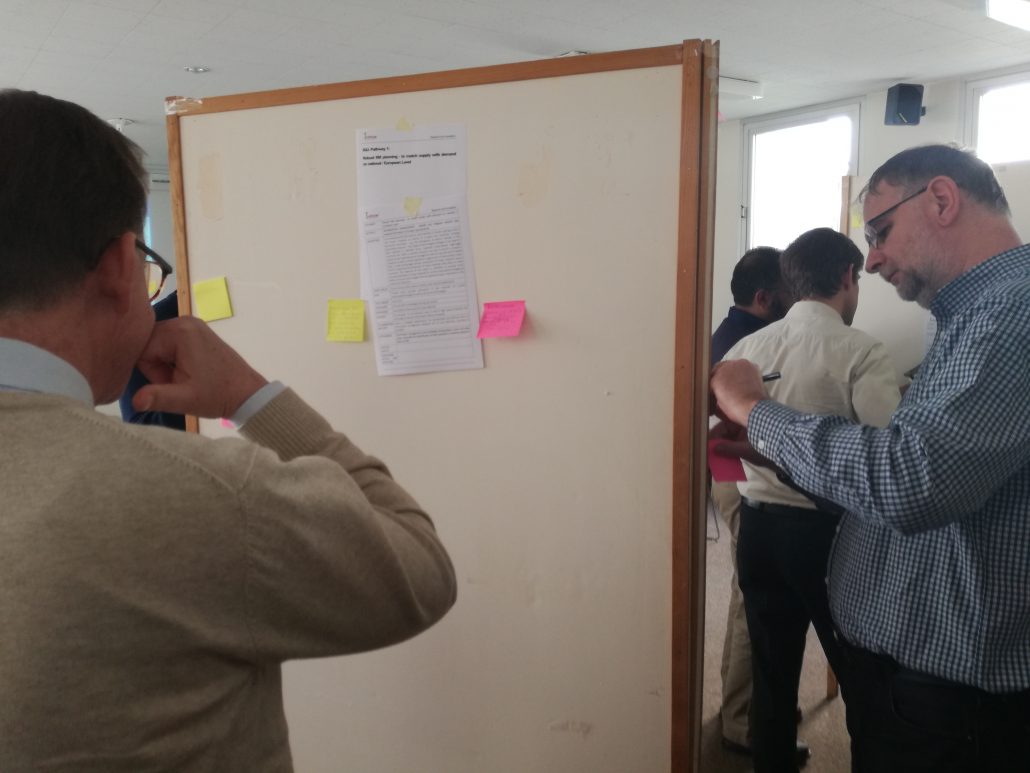
First exercise involved commenting on defined action plans
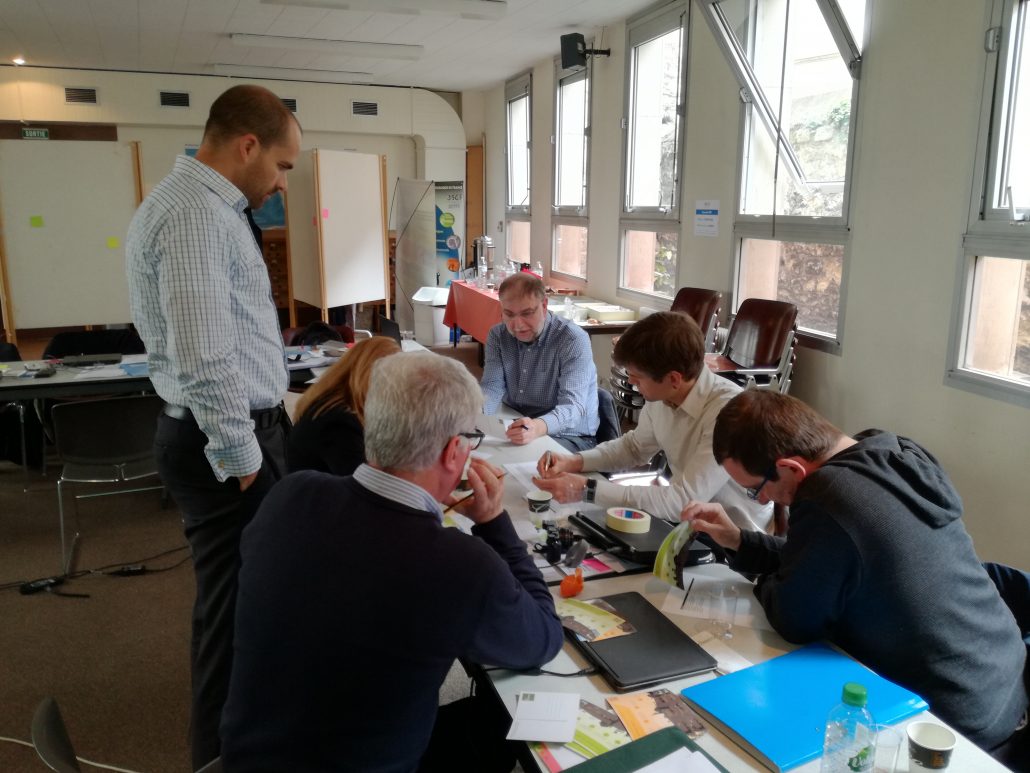
Second exercise dealt with analysis and classification of synergies between different action plans
The first day ended with an introductory discussion on WP3 concerning the validation of two important aspects of the project: the strategic plan for the Observatory, and the business plan for its future governing organisation.
The second day centred on more in-depth discussion on the strategic planning and business planning of the Observatory and its governing body, this time also focussing on the statutes of the Observatory. After the timeframe from discussions had ended, the two-day meeting ended with a summary of the work developed before and during the meeting, followed by the clarification of the decisions taken during the meeting concerning the Consortium’s actions for the following months.
In summary, it was a successful meeting, one where the presence of the reference countries contributed in a positive way towards the establishment of the future organisation. These partners have the experience to give valuable input for the international aspect of the Observatory.
INTRAW will end next year, and due to this meeting the preparations for the final steps are now underway.
KINDRA Progress Meeting, Rome
/in Event, News/by Adrienn CsekoOn the 1st and 2nd of March 2017, LPRC colleagues Ariadna Ortega & Adrienn Cseko attended a KINDRA progress meeting at the University of Sapienza in Rome. Amongst other things, project members discussed the technicalities related to the opening of the European Inventory of Groundwater Research – the very first online tool exclusively dedicated to groundwater research & knowledge. In addition, partners reviewed the possible set of tools to be used for gap analysis, and the steps which could be taken for more efficient project communication and dissemination. LPRC are proud to host the next KINDRA meeting with the JPE (Joint Panel of Experts) in La Palma in June!
2017 Real Time Mining Conference, Amsterdam
/in Event, News/by Adrienn CsekoIn October, LPRC will be taking part in the Real Time Mining Conference in Amsterdam. This conference, hosted by TU Delft on behalf of the Real Time Mining Consortium, will bring together an assortment of companies from the European mining industry who are working on projects commissioned by the EU’s Executive Agency for Small to Medium Enterprises (EASME) as part of the Horizon2020 research programme.
LPRC will be represented via two projects: Underwater Explorer for Flooded Mines (UNEXMIN, www.unexmin.eu @unexmin) and Viable Alternative Mine Operating System (VAMOS, www.vamos-project.eu @projectvamos).

The host project – Real Time Mining.
The conference will focus on five main topics related to improving the operating efficiency of the European extractive mining industry. Namely, these are ‘positioning and material tracking’, ‘automated material characterisation’, ‘resource modelling’, ‘process optimisation’, and ‘data management’.
Parties interested in attending should submit an abstract to Mike Buxton at TU Delft at M.W.N.Buxton_at_tudelft.nl, with more information on the conference being available for download at https://www.realtime-mining.eu/.
UNEXMIN’s Technology Appraisal Workshop
/in Event, News/by Luis LopesFrom the 31st of January to the 2nd of February, exactly one year since the beginning of the project, the UNEXMIN consortium held its fifth workshop at Tampere University of Technology in Tampere, Finland. Taking place at the home of partner organisation TUT, the workshop focussed on approving the technological developments of the project prior to the shortly-commencing manufacturing phase.
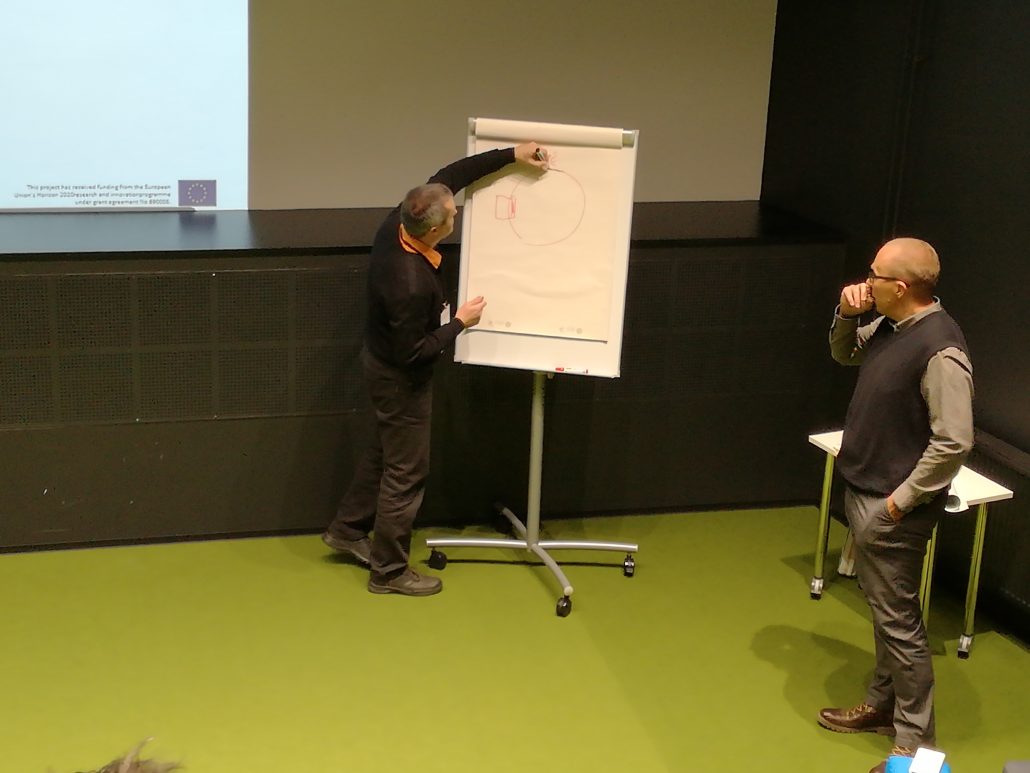
A live discussion on UX-1 robotics developments between technical project members
On day one, the three-day meeting began with a revision of all project Work Packages. The second day then consisted of technology appraisal discussions as well as workshops on technological developments on control systems and data conversion, dissemination strategy, together with the beginning of Work Packages 3 and 4. During these two days the advisory board members were present in the workshop and gave their valuable input to the discussion. The third and final day was dedicated to further technical discussions and decision-making on the mechanical design, sensory array, and systems testing.
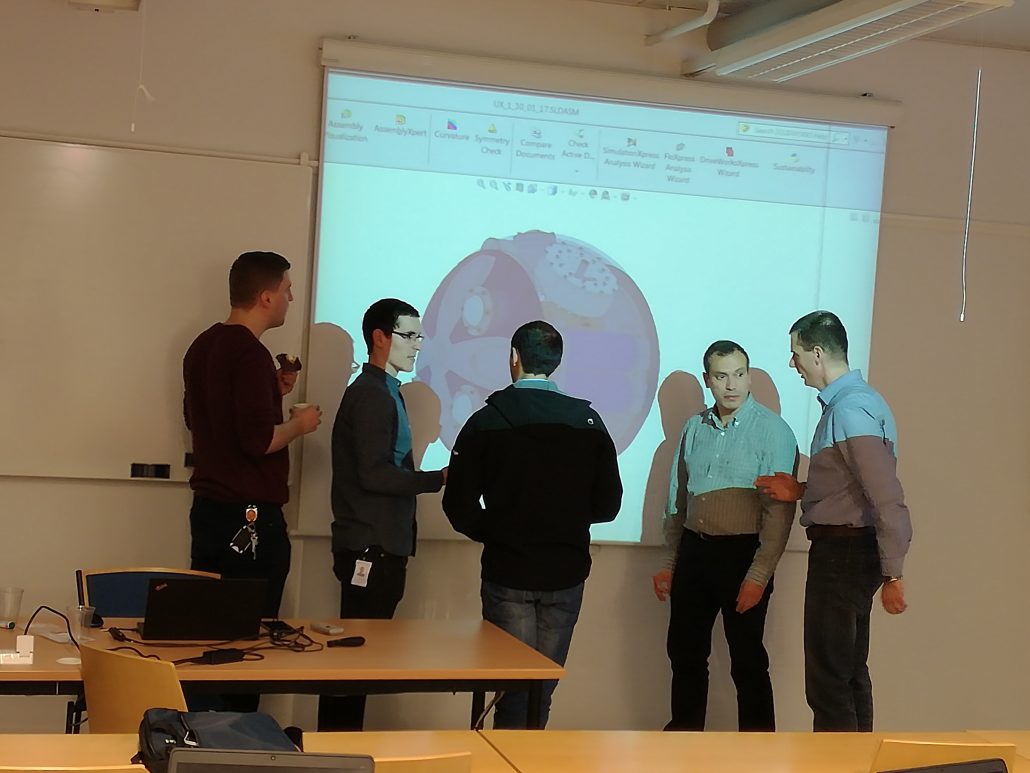
Technical workshops are good places to discuss developments. Shown above is the mechanical design and sensors workshop.
Creating a novel technology system like UNEXMIN is not easy. This is why these project meetings are so important, as they create to tangible advancements from synergistic collaboration leading to the generation of new ideas. Work will now continue with the development and testing of other technical instruments. The next big step is to build the first robotic prototype – UX-1!
What will it look like? Check the last picture for a sneak-peak…

